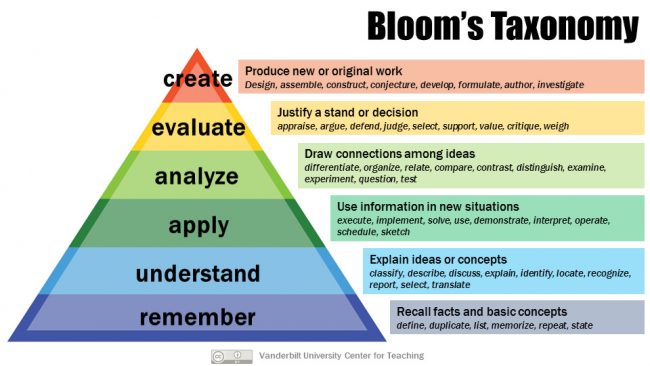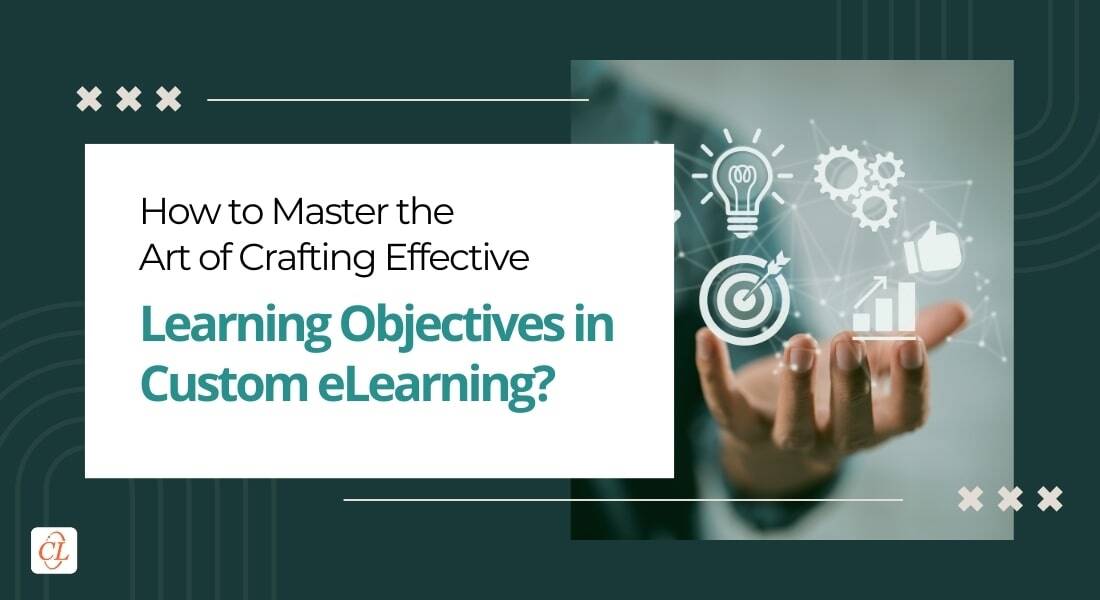What is So Important about Learning Objectives in Online Training?

Ask any Instructional Designers about learning objectives and they will immediately jump into an impromptu rendition about its importance that can rival any bard’s ballad. You think I’m exaggerating? Of course I am. (But they do seem a bit obsessed with learning objectives!) But jokes aside, learning objectives are very important when it comes to online training, and instructional designers who are obsessed with them are actually pretty smart.
Learning Objectives – Why are they Important for Online Training?
Learning objectives are the basis for deciding:
- Scope of content
- Choice of instructional method
- Choice of eLearning assessments
- Duration and cost of online training
Register for a free webinar “Become an eLearning Champion” and get answers to all your questions about eLearning.
Learning objectives are clear statements that convey what specific tasks/skills the learner will be able to do by end of that course. They are the framework around which the entire eLearning content is created and designed, bringing coherence and specificity to the training. Without learning objectives, learners might just drift through eLearning courses without knowing the answer to, “What was I supposed to learn and what did I actually learn?”
That’s why instructional designers place such great value on learning objectives. But what is their contribution to the big picture, to achieve the desired business goals? Why should you, as training managers, care about learning objectives as much as instructional designers do?
Turns out, learning objectives play a very important role in 5 major online training decisions. Let’s find out how, shall we?
5 Major Online Training Decisions that Depend on Learning Objectives
1. Scope of the eLearning Content
Bloom’s taxonomy, as you all know, plays a big role in learning objectives. It is a 6-level framework developed by Dr. Benjamin Bloom in 1956 and revised by Lorin Anderson in 2001 to better fit the training requirements of the 21st century.

Source: Vanderbilt University Center for Teaching
The framework is used by instructional designers to create learning objectives for online training – whether the objective is to make learners remember facts and basic concepts, understand an idea or concept, apply it to their situation, analyze something, evaluate a situation to make a decision, or create something on their own. Learning objectives in turn determine the scope of eLearning content.
Let’s take an example of training on Purchase Order Management Software. This training can have different learning objectives depending on the level of Bloom’s taxonomy we are aiming for.
Learning objective based on Bloom’s Taxonomy Level 1 (Remember): List all order details you need to place a Purchase Order.
Here, learners only need to recall the order details/information they need to place a purchase order. So, course content will only focus on the basics of a purchase order and what it contains.
Learning objective based on Bloom’s Taxonomy Level 2 (Understand): Explain the steps to generate a Purchase Order.
Here, the content focuses on enabling learners to generate a purchase order by following the steps in the right sequence.
Learning objective based on Bloom’s Taxonomy Level 3 (Apply): Demonstrate how to generate a Purchase Order from start to finish.
Here, the content focuses on enabling learners to apply their knowledge and generate a Purchase Order on their own.
As you can see, though the training was on the same Purchase Order Management Software, the three different learning objectives determined the scope of eLearning content for three courses.
2. Choice of Instructional Method
Much like for the scope of content, learning objectives also set the stage for the instructional method to be used. The instructional method using in online training must be aligned to the learning objectives for effective training. If the learning objective is to enable learners to remember information, a simple eLearning course will do. If the learning objective is to enable learners to demonstrate or execute, something, simulations, game-based design, or VR-based immersive learning can be used effectively. If the learning objective is to enable learners to evaluate a situation and make decisions based on it, branching scenarios can be used as the instructional method.
Let’s discuss the previous example of Purchase Order Management Software training once again, but this time in terms of instructional design strategy. The three learning objectives sought to train learners on three different levels of a Purchase Order Management Software.
For Bloom’s taxonomy level 1 (remember), a basic eLearning course with low-level interactivity will do. For the second level (understand), learners can watch a screencast video of the Purchase Order form to be able to explain how a Purchase Order is generated. For the third level (apply), learners can be trained with a ‘Watch-Try-Do’ simulation.
3. Choice of eLearning Assessments
Now you know why it is important to base your eLearning course content and design on the learning objectives. What about eLearning assessments? Do you need to consider learning objectives while creating online assessments as well? The answer is, “Yes!”
Aligning eLearning assessments with learning objectives is very important because it will allow you to evaluate the effectiveness of training – to assess if learners can perform the task they are expected to after the training.
To align eLearning assessments with learning objectives, you can again take a cue from Bloom’s Taxonomy. Let’s see how assessments for the Purchase Order training can be aligned with the learning objectives.
Learning objective based on Bloom’s Taxonomy Level 1 (Remember): List all order details you need to place a Purchase Order.
For this level, you can use fill the blanks and multiple-choice questions, as learners merely need to recall factual information and simple assessments will accomplish the goal.
Learning objective based on Bloom’s Taxonomy Level 2 (Understand): Explain the steps to generate a Purchase Order.
Here you can use drag and drop, match the columns, or arrange in sequence assessments to see if learners can explain every step correctly. You can also let learners type in their answers explaining the steps.
Learning objective based on Bloom’s Taxonomy Level 3 (Apply): Demonstrate how to generate a Purchase Order from start to finish.
Here you can use the ‘Do’ mode of a Watch-Try-Do simulation training for the assessment. Learners will be asked to generate a Purchase Order on their own without any hints/clues.
4. Duration of Online Training
Duration of training is very important when it comes to corporate online training. It will depend on the complexity of the subject matter, level of interactivities, the risk-factor involved in the job, and more. Since learning objectives consider all these factors, they can be used to determine the duration of the course.
For an eLearning course with the learning objectives at Bloom’s first level, with basic content and simple interactivities, the duration will be shorter than for a course involving complex subjects and highly interactive design.
The course duration will also depend on the number of learning objectives dealt with in the course. So, a microlearning module dealing with a single learning objective will be much shorter than a regular eLearning course.
5. Cost of Online Training
Here comes the one factor that determines the fate of your entire online training program – budget. As training managers, you are all aware of the importance of the budget for designing, developing, and implementing online training. But how do you determine and give stakeholders and other decision-makers an estimated cost of training? Once again, learning objectives will help you make this decision.
Since learning objectives pretty much control every other training decision, the scope of content, instructional design, assessment type, and even duration of training, all these factors will weigh-in to determine the cost of training.
If the learning objective is to give learners a chance to apply their knowledge to perform a task, you’ll need to use highly-interactive instructional strategies like simulations, branching scenarios, or immersive learning. Designing and developing such training will involve much time and effort and will obviously cost more. But if the learning objective is just to enable learners to remember information or understand a concept, you can use more basic interactivities, and keep the costs down.
Summing it Up!
I hope you found this blog on learning objectives useful and it helped you understand their importance in online training. While learning objectives no doubt fall in the realm of instructional designers, they do play a crucial role for the entire training.
For more information, download our eBook on Instructional Design 101 for a complete guide on eLearning design.





